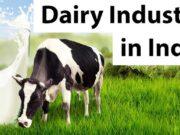
The ability of a herd or animal to reproduce is a crucial factor in determining the long-term viability of a dairy farming operation. Evaluating the productivity and reproductive capabilities of animals requires a combination of factors to assess their overall effectiveness.
Key factors that determine the reproductive and productive capabilities of cattle include the age at first service, age at first calving, weight of their offspring at birth, milk yield, calving interval and service period length. These factors are also significant in the economic aspects of dairy farming. The most important parameters to measure the farm economy are calving interval, age at puberty, service per conception, gestation length and birth weight of fetus and among which calving interval is often seen as the most reliable measure of a herd’s reproductive efficiency.
Reproduction is a crucial element in assessing the productivity of animals. However, there are specific issues that impact livestock farming, which in turn, affects the income of farmers. Anestrus is a prevalent reproductive issue among cattle and buffalo in India. It is a condition that disrupts the normal reproductive cycle, marked by the lack of visible signs of estrus, either because the signs are not expressed or not recognized. This condition is seen in animals after puberty, during pregnancy and lactation, and in the early stages following parturition in adult animals. In heifers, it can become a significant issue within the herd, possibly due to inadequate nutrition, stress from seasonal changes, or harsh weather conditions. Studies have shown a wide range of anestrus occurrence rates, varying by species, breed, age, season, nutrition, management practices, and geographical location. Anestrus is more common in adult cattle and buffalo compared to heifers.
Anestrus results in financial setbacks through longer calving intervals, reduced numbers of calves born, decreased productivity, expenses for treatments, and the cost involved in replacing older animals with their first-time mothers. Prolonged anestrus, caused by the end of the reproductive cycle, due to the absence of visible follicles or palpable follicles, is referred to as true anestrus.
False anestrus can be either natural (related to lactation, gestation, or open periods) or due to diseases like pyometra and chronic metritis. Anestrus is the primary single factor leading to infertility in cattle and buffaloes. The presence of clear signs of estrus is significantly impacted by heat stress in buffaloes. In contrast to cows, buffaloes have fewer preantral and antral follicles, smaller pre–ovulatory follicles, and a higher likelihood of follicular atresia, which could explain the higher rate of anestrus in buffaloes. In general, anestrus is a complex issue that contributes to the failure of animals to show estrus, which can occur before or after giving birth. It can be caused by various factors: Congenital abnormalities, Retention of Corpus luteum, Physiological anestrus, Gestational anestrus, Nutrition, Hormonal Imbalance.
Diagnosis:-
History (According to the data, animals failed to exhibit overt signs of estrus after reaching puberty or 60–90 days after partituration), Progesterone estimation (Anestrus is characterized by a less amount of ovarian progesterone.) Per Rectal examination (During a rectal examination, the ovaries of cattle and buffaloes in true anestrus are found to be smooth, small, and inactive, lacking any corpus luteum.), Ultrasonography (Ultrasonography is a useful tool for identifying anestrus type and different stages of follicular growth.), Silent heat (Sometimes, the signals are there, but they go unnoticed, or the heat symptoms are so faint that they barely register. This phenomenon is known as Silent heat. It’s especially prevalent in buffaloes, particularly when the summer sun blazes down.), Heat Stress (Buffaloes often struggle to show clear signs of heat during the summer months due to heat stress. The scorching temperatures lead to an increase in ACTH secretion and a decrease in LH secretion.)
Treatment of anestrus
Lugol’s iodine paint: Portray of Lugol’s iodine on posterior or last portion of the cervix causes local irritation and brings around reflux incitement at hypothalamus for discharge of gonadotrophin releasing hormone and thus cyclicity. The absorbed iodine likely increase the metabolic rate of body through fortifying the thyroid hormone emission. increased metabolic rate trigger the ovarian capacities by upgrading the vitality utilization.
Non hormonal medications; Plants synthesize assortments of phyto-chemicals such as alkaloids, glycosides, terpenes and tannins (auxiliary metabolites) as a portion of their typical metabolic action. Numerous plants are wealthy source of vitamins and minerals though a few have estrogenic property which is valuable in rebuilding of cyclicity in anestrus creatures. Numerous plants such as Murraya koenigii (curry takes off), Nigella sativa (kalonji), Abroma augusta (Ulatkambal), Saraca asoca (Ashoka), Trigonella foenum–graecum (Methi), Bambusa aruninacea, Carica papaya, Asparagus recemosus, Leptadenia reticulate, Courupita guianesis, Pergulacia daemia, Semecarpus anacardium cucumber, and jute plants either alone or in combinations have been bolstered to treat the anestrus creatures with variable reaction on acceptance of estrus.
- Hormonal therapy: After this induce the estrus by the hormonal treatment. For this we can give:
Estrogen: In presence of prevailing.
follicle, estrogen administration results in expression of estrus and ovulation since of its positive feedback impact over pituitary for LH surge. For this reason, it has been utilized to induce ovulation and to diminish postpartum anestrus period.
One or two doses of i/m inj estradiol (2–10mg) or estrone (5–15mg) at three days interval can be used to regresses the retained CL related with pyometra, mummification and mucometra.
Give estrogen 10 mg i/m. Animal will come into heat within 2-4 days after injection. It should never be given in lactating animals but can be utilized in heifers.
Side effects: A long-term estrogen concentration can lead to cystic ovaries, irregular movement and contractions of the oviduct, which can result in infections of the ovaries. In animals that are nursing, this can cause a significant decrease in milk production.
FSH: Follogon 1000 I.U.i/m. The animal will typically come into heat within three days.
Progesterone: Progesterone therapy is commonly used today for inducing estrus. By administering exogenous progesterone, it mimics the luteal phase of the estrus cycle, which suppresses the release of luteinizing hormone (LH) from the hypothalamus and pituitary gland. When progesterone is discontinued, it stimulates the return to the normal follicular phase of the cycle. This treatment appears to be effective, but it requires a sudden drop in progesterone levels at the end of the treatment period. Progesterone can be derived from natural sources or synthetic compounds and is used in various treatment protocols.
Ovsynch protocol/G-P-G regime: On day 0, an injection of GnRH analogue (Buserelin acetate; Receptal) at a dose of 20µg i/m is administered. This is followed by an injection of PGF2α (Dianoprost tromethamine; Lutalyse) at a dose of 25 mg i/m, and again on day 9, the GnRH analogue is given at a dose of 20µg i/m. The animal will typically show signs of estrus within 24 to 48 hours after the final GnRH injection. Animals that are not in anestrus respond more favorably to the Ovsynch protocol compared to those that are not in heat.
Gonadotrophins: The use of pregnant mare serum gonadotrophin (PMSG) or equine chorionic gonadotrophin (eCG) is a potent activator of ovarian function due to its high FSH activity. This has led to its widespread application in superovulation. PMSG can prevent and reverse the process of follicular atresia, making it a suitable option for managing anestrus in buffaloes at low doses, where follicular atresia is a common issue. Human chorionic gonadotrophin (hCG) has also shown some success in treating anestrus in buffaloes.
Prostaglandin: Prostaglandin (PGF2α) is the preferred for regress the persistent corpus luteum and subestrus conditions. It is most effective between days 6–16 of the cycle and when there is an active corpus luteum.
Insulin:. The use of GnRH or eCG in combination with insulin has demonstrated promising outcomes for the management of anestrus in cattle and buffaloes. Insulin promotes follicular development in true anestrus buffalo, which is essential for the effectiveness of GnRH.
H. Anti–Prolactin Based Treatment: Hyper–prolactinaemia has been observed in buffaloes during the summer, which could be a contributing factor to summer anestrus in buffaloes. To address this, anti–prolactin drugs like bromocriptine have been explored. Additionally, melatonin has been found to stimulate both GnRH and gonadotrophin secretion in buffaloes. Given that melatonin levels are lower during the summer, it has been effective in inducing estrus and ovulation in buffaloes treated with melatonin implants.
Treatment of Silent Estrus: In cases where the owner is not aware of the animal’s estrus, it is recommended to ask about the day of vaginal discharge. If there is no clear history of estrus, PGF2α can be administered after a 10-12 day delay following the vaginal discharge. Alternatively, palpating the corpus luteum can also indicate the need for PGF2α. Animals typically come into heat within 72 hours after PGF2α treatment.
Prevention
Maintaining the well-being of animals through the use of effective farm management strategies. Nutrition is likely the most critical factor, influencing ovarian function. It’s essential to focus on avoiding a negative energy balance in high-producing animals. This can be achieved by ensuring proper nutrition during both the pre- and postpartum stages. Adding vitamins, minerals, and antioxidants to animal feed shows promise in restoring the menstrual cycle. As the act of suckling reduces the frequency of LH pulses and lengthens the period of postpartum anestrus, weaning can serve as a valuable tool to shorten the postpartum anestrus phase after LH pulsatile secretion resumes in postpartum animals. The introduction of males to a group of females (biostimulation) triggers LH secretion, leading to ovulation in females through olfactory and sensory signals. Implementing certain management strategies, such as early detection of estrus, routine pregnancy checks (40–60 days after breeding), preventing postpartum uterine infections and diseases (ketosis and mastitis), regular deworming, and synchronization of estrus, especially in buffaloes where detecting heat is more challenging, can be beneficial in preventing anestrus.
Conclusion
Anestrus is a complex issue with various causes that significantly impacts livestock operations. Early detection and treatment are crucial to prevent its onset for successful management. Therefore, there is no single solution to address anestrus.
Dr. Rachana Sharma, Dr. Gurpreet Singh and Dr. Pallavi Khajuria
Department of Veterinary Physiology and Biochemistry
College of Veterinary Science, Rampura Phul,
Guru Angad Dev Veterinary and Animal Sciences University



















